Andalusia in winter feels like a secret most people just haven’t stumbled across yet. The sun hangs around, the air stays gentle, and the usual crowds thin out—so you get more space to soak in the charm of southern Spain.
If you want mild weather, sparkling festive lights, and the soul-warming comfort of cozy tapas bars off-season, Andalusia is the perfect escape.
I still remember wandering cobblestone streets in Granada and Seville, wrapped in a light jacket, golden sunshine on my face, and just a little chill in the air.
Plazas glow with holiday decorations, while locals gather in snug bars for plates of olives, jamón, and sizzling prawns.
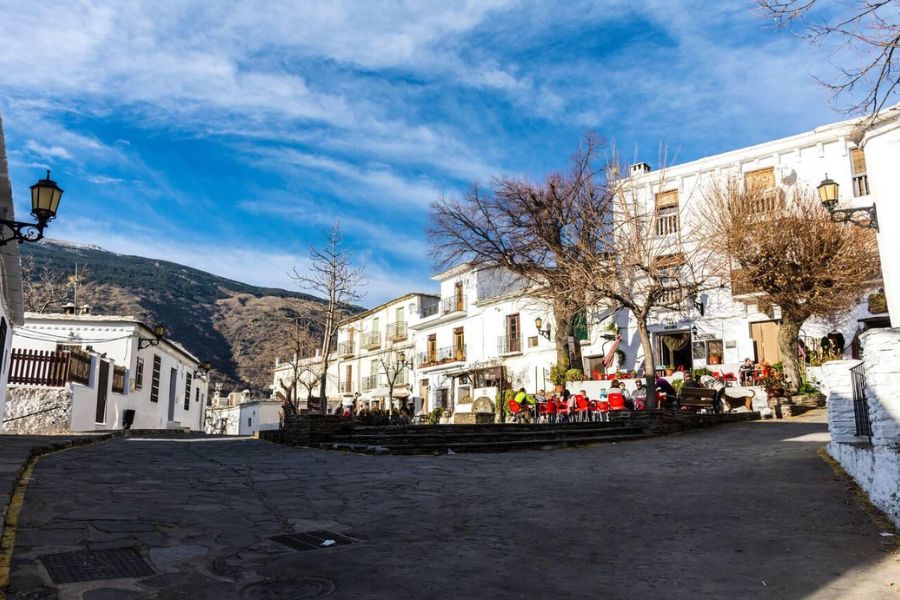
This is the Andalusia that really hooked me—the quiet squares, the festive buzz, and the freedom to explore at your own pace.
If you crave a winter sun getaway with lots of culture and good food, you’ll feel right at home here.
Why Andalusia Is Your Ultimate Winter Sun Escape
Winter in Andalusia lights up with bright weather, colorful celebrations, and a vibe that just feels special while most of Europe stays chilly and gray.
The mix of Mediterranean climate, sunny skies, and festive traditions makes this region a unique winter getaway.
Mediterranean Climate and Mild Winters
One of the best things about Andalusia? It actually stays warm in winter. I’ve enjoyed clear blue skies in Seville and Granada when the rest of Europe shivers.
Afternoon temperatures in Malaga, Cordoba, and Cadiz often climb into the high teens or even low 20s °C, especially on sunny days.
Rain hardly shows up between December and February, so I can plan days outside—maybe strolling through orange-scented plazas or hiking in the countryside.
Sitting outside at a local cafe for tapas and coffee almost feels like cheating winter. Sunlight floods the streets, and honestly, it lifts my mood.
If you’d rather have sun and pleasant weather instead of cold winds and icy sidewalks, Andalusia delivers that classic Mediterranean vibe—mild days, gentle evenings, and endless chances to be outdoors.
Comparing Weather: Andalusia vs. the Rest of Europe
I keep comparing my Andalusian winters with stories friends tell from elsewhere in Europe.
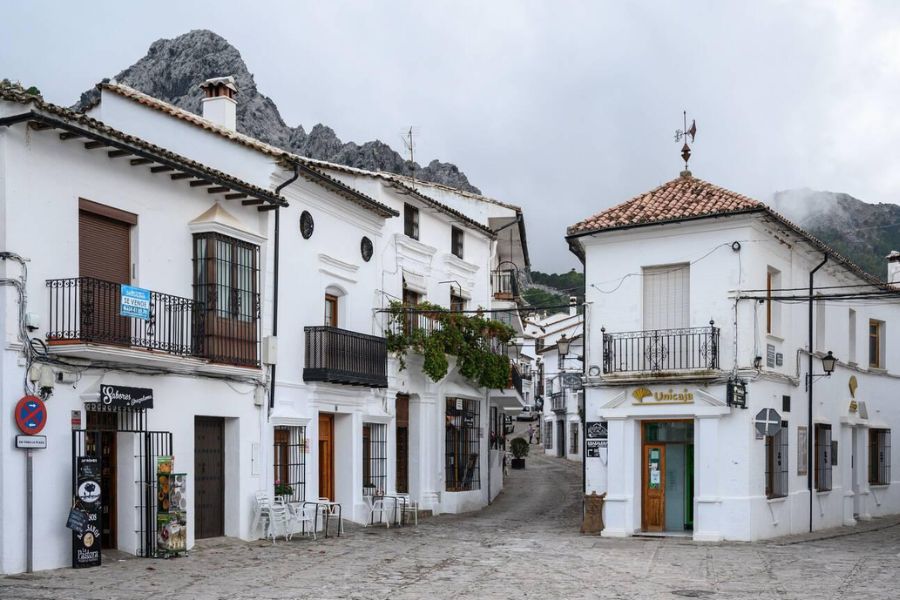
Take a look at average December–January temperatures:
| City | Avg. High (°C) | Avg. Days of Sun |
|---|---|---|
| Malaga | 17 | 20–22 |
| Seville | 16 | 18–20 |
| Berlin | 4 | 8–10 |
| London | 7 | 10–12 |
While other cities spend weeks under clouds, Andalusia shines with double the sunshine.
I rarely need more than a light jacket during the day. That bright weather lets me explore castles, ruins, and white villages without crowds or dampness.
Travelers from northern Europe notice the difference right away. It’s easy to see why so many people head to southern Spain for their winter sun break.
Festive Atmosphere in December and January
Andalusia really goes for it with holiday spirit. In December and January, cities like Cordoba, Seville, and Malaga burst to life with festive lights draped across ancient streets.
Locals gather for outdoor concerts and street markets, not bothered by the cooler night air.
I love wandering through illuminated plazas and grabbing churros or roasted chestnuts at a busy stand.
Each town has its own twist on the holidays; in Malaga, the Christmas lights on Calle Larios draw crowds from all over Spain.
Epiphany (January 6th) is huge here, with the Three Kings parade filling the air with music, candy, and laughter.

Evenings feel extra cozy, with many tapas bars glowing from within as friends share plates of local favorites.
Andalusia’s mix of mild weather and lively traditions creates a warm, welcoming escape from the usual European winter.
Chasing Festive Lights and Authentic Celebrations
Whenever I visit Andalusia in winter, I notice how the region comes alive with color, warmth, and tradition.
Even after the summer crowds leave, the festive lights, busy market stalls, and local customs turn chilly evenings into something special.
Where to Find the Brightest Displays
Seville’s holiday light show is one of my favorite winter sights. Walking through the illuminated streets around Plaza de España and Avenida de la Constitución, the colors and designs always feel a bit magical.
The city lines up light installations that mix classic Spanish motifs with modern shapes, so even a quick stroll feels special.
Málaga’s city center is famous for its annual festive lights too. Calle Larios sparkles every evening, and live music events usually add to the energy.
Córdoba and Granada decorate their centers with their own style. I find new displays every year—it keeps things interesting.
Many towns and villages string lights along narrow lanes, showing off Moorish architecture.
Some nights, walking from one square to another feels like wandering through a moving postcard.
Local Traditions and Holiday Events
In December, I love watching flamenco-inspired Nativity plays, called zambombas. These open-air celebrations mix carols, dance, and food, especially in towns like Jerez de la Frontera.
Locals gather to sing, snack on sweet treats, and play homemade instruments, keeping traditions alive.
Seville hosts lively street parades and religious events, including the “Cabalgata de Reyes” parade on January 5th.
Families line the streets to catch sweets tossed by the Three Kings.
In many places, you’ll spot kids dressed as shepherds in parades, and local churches put together elaborate Nativity scenes.
Food plays a big part in all this. I always make time to relax in a cozy tapas bar.
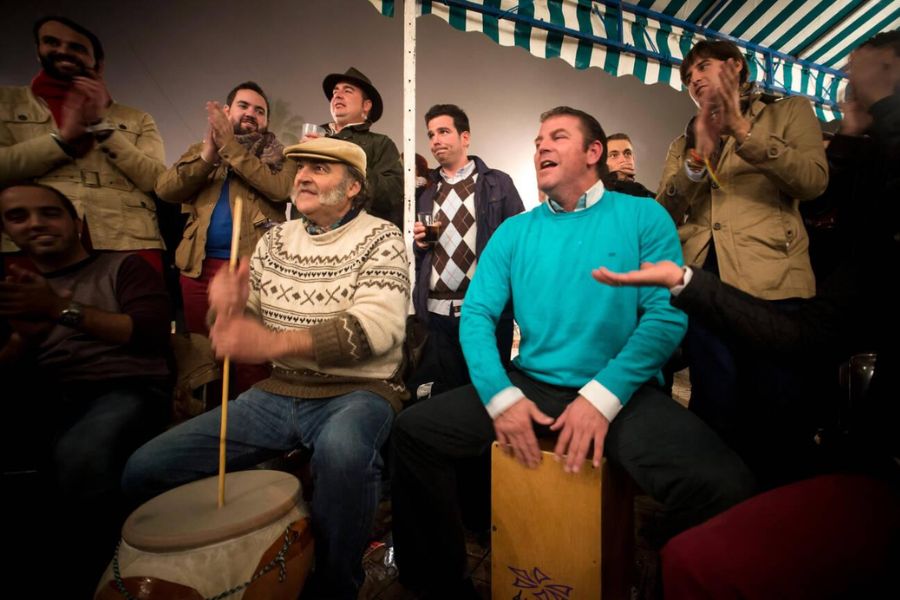
Seasonal favorites like turrón (nougat) and polvorones (shortbread cookies) show up, served with warm drinks and local wines.
Exploring Christmas Markets and Local Crafts
Christmas markets pop up in most Andalusian cities and towns during December.
My favorite is in Seville’s Plaza Nueva, where dozens of stalls sell ornaments, hand-carved Nativity figures, and local crafts.
The shadow of the cathedral and old buildings makes the atmosphere feel magical.
In Málaga, the Paseo del Parque becomes a market full of handmade jewelry and traditional Andalusian pottery.
I spend hours browsing wooden toys, embroidered linens, and souvenirs made by local artisans.
If you’re hunting for a unique gift, you’ll have plenty of options.
Many smaller villages host seasonal fairs with workshops and demonstrations.
I’ve even tried making my own ceramic ornament—let’s just say it’s far from perfect, but it’s still my favorite holiday keepsake.
Meeting the craftspeople and hearing their stories always adds a personal touch.
Savoring Cozy Tapas Bars and Winter Gastronomy
When the winter sun dips below Andalusia’s rooftops, the city glows from inside its inviting bars and kitchens.
The colder months are perfect for discovering authentic flavors and enjoying the best Spanish food.
Best Tapas Bars Off-Season
I find that the coziest tapas bars really shine in winter. Seville’s Eslava has become a personal favorite—it’s lively but not too crowded off-season, so it’s easier to get a table and try their legendary slow-cooked eggs with boletus mushrooms and truffle oil.
Hidden gems in the old town, like rustic bars tucked behind market squares, offer a warm retreat from cool evenings.
I’ve wandered through local markets that lead to narrow alleyways, stumbling into tapas bars where the fire crackles and laughter fills the air.

A small plate of gambas al ajillo (garlic shrimp) or grilled pork loin always tastes better when you’re out of the summer rush.
I’d suggest making a list and exploring a few neighborhoods. The Triana district is packed with spots where locals linger by the bar, sharing plates and stories.
Seasonal Dishes to Warm You Up
Winter menus in Andalusia focus on hearty, warming dishes that bring real comfort after a chilly stroll.
Espinacas con garbanzos—spinach with chickpeas—is rich and filling, usually simmered with garlic and spices.
Sizzling chorizo, grilled to order, is another staple I can’t resist.
Puchero Andaluz, a traditional stew of meats and vegetables, keeps everyone fueled when temperatures drop.
Baked eggs show up often in winter, sometimes served over potato or tomato, usually straight from the oven in a small clay dish.
A short list of winter favorites:
- Salmorejo (thicker than gazpacho, topped with hard-boiled egg and jamón)
- Grilled artichokes with olive oil and lemon
- Huevos a la flamenca (baked eggs with peppers and sausage)
Every dish tells its own story, and winter is when Andalusian food really shines.
Pairing Tapas with Local Wine
A meal in Andalusia just isn’t complete without a glass of local wine.
In the cooler months, I lean toward fuller-bodied reds from nearby regions, or a smooth sherry—Jerez is close by and their fino or oloroso sherries pair perfectly with savory tapas.
At bars like Eslava, staff often suggest a wine for each dish.

A dry white from Ronda goes well with grilled fish or artichokes, while a bold red from Montilla-Moriles brings out the best in stews or roasted meats.
Here’s a simple guide:
| Dish | Recommended Wine |
|---|---|
| Grilled pork or steak | Tempranillo red |
| Spinach with chickpeas | Amontillado sherry |
| Salmorejo | Light Andalusian white |
| Chorizo or sausages | Young Rioja |
Sampling different wines is half the fun. Each pairing brings out something new in the food, making every tapas crawl in winter a little adventure.
Exploring Andalusia’s Historic Cities and Iconic Sights
Seville shines in winter when crowds thin and sunshine warms the historic streets.
I found each landmark had its own charm, from gothic towers to lively performances and festive markets.
Seville: Gothic Cathedral and the Real Alcázar
I started my trip in Seville’s city center, where the Seville Cathedral’s massive gothic structure blew me away.
It’s one of the largest cathedrals in the world. The high ceilings, stained glass, and artwork make every visit memorable.
I climbed the Giralda Tower for sunny winter views over Seville’s rooftops.
Inside, I visited the tomb of Christopher Columbus—definitely a highlight for history lovers.
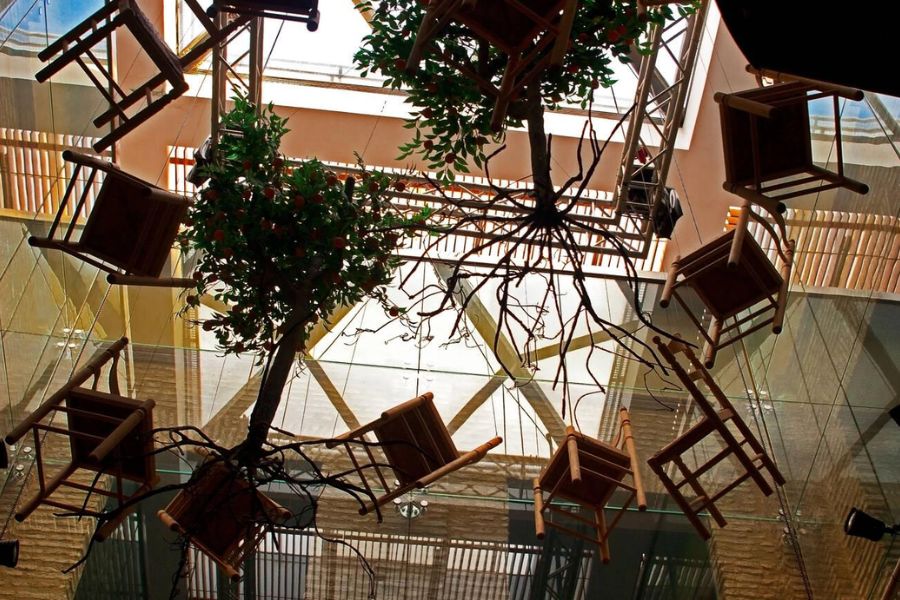
Just steps away stands the Real Alcázar. Walking through its gardens and courtyards, I admired the blend of Islamic and Gothic designs.
I always recommend booking tickets ahead in winter, since lines can still get long on weekends.
Plaza de España and Metropol Parasol
Seville’s Plaza de España glows in winter light.
The half-moon building is surrounded by tiled bridges and canals. I enjoyed watching families paddle rowboats and taking photos by the ceramic benches, each one representing a different Spanish province.
If you’re into modern architecture, check out Metropol Parasol—locals call it Las Setas.
The wooden structure stretches above the central square like giant mushrooms.
I climbed to the viewing deck and took in a panoramic view of the city, with orange trees and buzzing cafes below.
In the evenings, the lights make it feel especially magical.
Flamenco and Cultural Heritage Experiences
No trip to Seville feels complete without seeing flamenco.
I booked a show in one of the city’s cozy, hidden tablaos. The passion and rhythm of the dancers and musicians hit even harder on a chilly night.
Some venues offer beginner classes if you want to give the moves a try.
I explored museums like the Museo del Baile Flamenco to get a better sense of flamenco’s roots.
The exhibits showcase costumes, instruments, and the history behind the art.
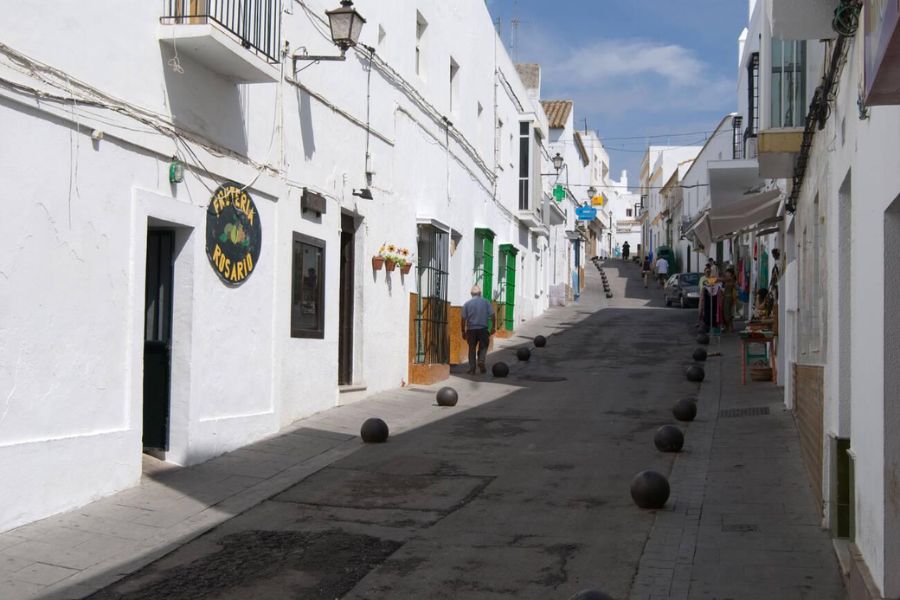
I suggest visiting during festivals, when street performances and parades fill the air with music and color.
In winter, it’s easier to find seats and chat with local performers after the show.
Coastal Sunshine: Discovering Offbeat Towns and Beach Retreats
Andalusia’s Atlantic coast just hits different compared to the busy Mediterranean side. I stumbled onto quiet beaches, fresh seafood, and small towns where winter days still feel warm under the sun.
Hidden Spots on the Atlantic Coast
I wandered along the Atlantic coastline of Andalusia and found towns that never really get crowded, not even in winter. Zahara de los Atunes and Barbate, for example, have beaches where you might only see a few local fishermen or someone walking their dog.
I loved strolling on the sands of El Palmar. Watching surfers chase waves under pale skies felt almost meditative.
Vejer de la Frontera sits on a hill, not far from the ocean. Those whitewashed streets and big views of farmland and sea totally surprised me.
Life moves slowly here. That’s perfect for winter wandering.
Even in December or January, the sun usually peeks through by afternoon. Sometimes I’d just take a gentle walk or throw together a quick picnic by the dunes.
Quick List: Offbeat Atlantic Towns
- Zahara de los Atunes
- Barbate
- El Palmar
- Vejer de la Frontera
These towns keep just enough going in winter—a bakery open in the morning, a quiet bar at dusk. It feels inviting but never hectic.
Seaside Tapas Venues Open in Winter
Even though most tourists disappear, I managed to find some tapas bars still buzzing near the coast, especially in Conil de la Frontera and Tarifa. Menus shift in winter, focusing on warm stews, grilled tuna, and chocos (fried cuttlefish).
One of my favorite spots had big windows facing the water. Locals would gather there for plates of atún encebollado (tuna with onions) and local wines.
Here’s what I looked for when choosing a winter tapas spot:
- Indoor seating with heaters or a fireplace
- A simple menu with fresh seafood
- Local wines and sherry
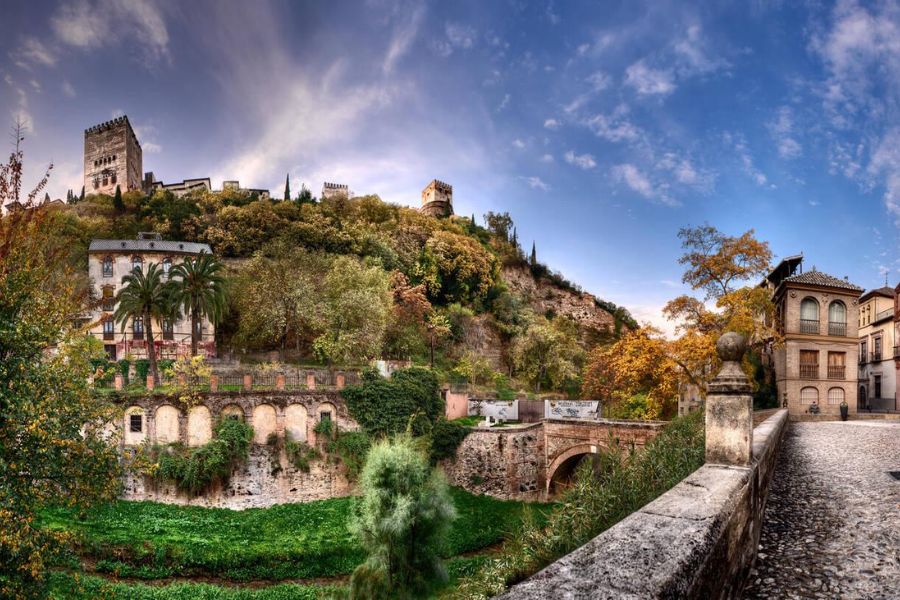
Most bars are family-run and close for a bit in the late afternoon. I learned to plan for a long lunch instead of expecting a late dinner.
Sharing papas aliñás (potato salad) and a bowl of hot alubias (beans) as the sun dipped over the quiet Atlantic—those evenings stuck with me.
Practical Tips: Safety, Nightlife, and Traveler Insights
Andalusia in winter stays lively but never feels overwhelming. There’s a friendly vibe and fewer crowds.
I honestly feel safer here than in a lot of big European cities. The genuine local culture shines through after dark, and you’ll find all kinds of places to stay.
Staying Safe: Assessing Violent Crime and Local Attitudes
Walking around Seville and Granada, even at night, always felt safe to me—especially in the quieter winter months. Violent crime rates run low in Andalusia, especially compared to major capitals.
Petty theft like pickpocketing can happen, mostly in crowded markets or on public buses. I found that just being aware and keeping an eye on my stuff worked fine.
Locals usually come across as warm and helpful, especially if you try a few words of Spanish. Crimes are mostly non-violent and rare in the smaller mountain towns.

If you’re traveling solo or out after sunset, stick to well-lit streets and keep your valuables close. That’s usually all you need to feel comfortable here.
Nightlife in Winter: Where Locals Go
Winter nightlife turns cozy, but it’s still a blast. Instead of loud beach bars, I ended up ducking into tapa bars glowing with soft lights.
Locals gather for late bites and laughter over glasses of vermouth or sherry. It feels authentic.
In cities like Málaga and Córdoba, nightlife shifts indoors—think flamenco bars and music cafés. It’s a fun way to meet locals, catch a poetry night, or listen to live music.
Crowds show up late—sometimes after 10 p.m.—and weekdays can get just as lively as weekends.
My tip? Ask bar staff or your hosts for their favorite spots. That’s how I found tiny taverns with the best atmosphere, far from tourist crowds.
Choosing Where to Stay and Traveler Reviews
Where you sleep really shapes your winter experience in Andalusia. I like family-run guesthouses or boutique hotels tucked into old quarters for easy walks to sights and tapas bars.
Many places offer heated rooms. Some—especially in Granada—even have rooftop views of the Alhambra.
I always check recent traveler reviews for notes on cleanliness, heating, and quiet rooms. Winter nights can get chilly, and not every building is well-insulated.
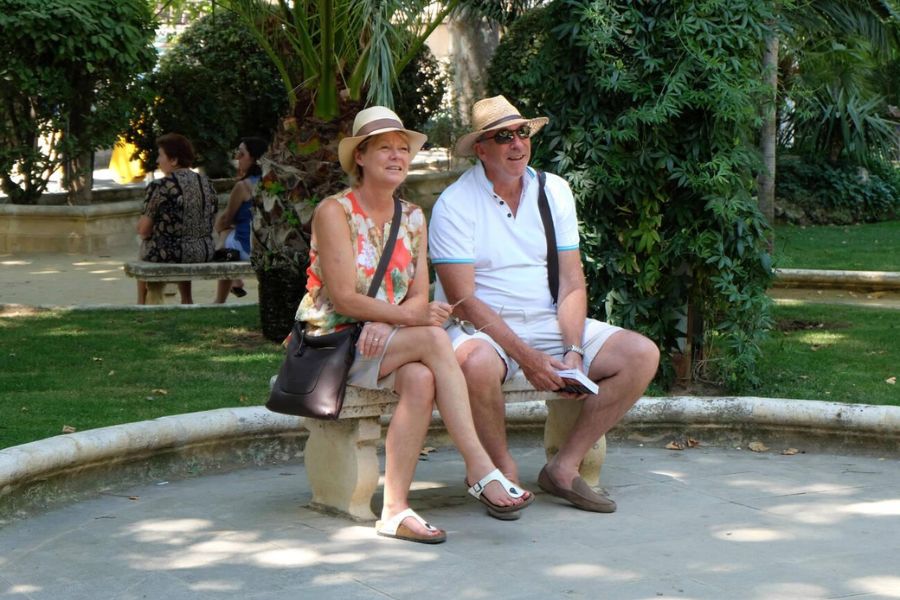
If you want a social vibe, look for places with lounges or meeting rooms. They’re great for chatting with other travelers.
Here’s a quick table I use when picking accommodations:
| Feature | What I Look For |
|---|---|
| Heating | Central or portable heaters |
| Location | Old town or near main sights |
| Reviews | Recent, mentioning winter stays |
| Extras | Common rooms or rooftop spaces |
Planning: Exposure, Endorsements, and Booking Advice
Winter in Andalusia brings fewer tourists. Still, some of the popular spots fill up quickly, especially when there’s a festival or holiday.
I usually book my main accommodations early. But I like to leave a few nights unplanned so I can wander and see where things take me.
I always hunt for places that real travelers recommend, especially those with lots of good reviews from people who visited in the off-season. Most restaurants and flamenco clubs stay open during winter, and even digital nomad meeting spots keep their doors open. That said, I always double-check hours—some places shut earlier when it’s quiet.
When I book, I stick to platforms that highlight guest ratings and offer honest feedback. I look for mentions of solid heating, friendly staff, or any notes about safety. Those little details really do make my winter trips in Andalusia way better.

